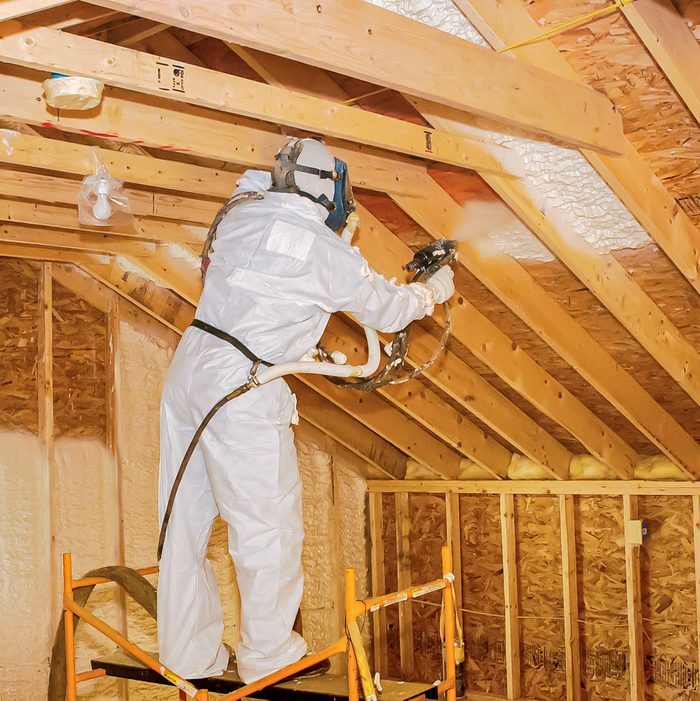What’s the Best Cathedral Ceiling Insulation Option?
Updated: Oct. 04, 2023

Cathedral ceiling insulation is vital to keep moisture from sneaking in. But have you ever wondered what the best option is for insulation?
Cathedral ceilings are a popular design choice in homes because they can give a room a dramatic, statement-making flair. They can also make a space feel roomier, and there’s a ton of different ways to approach them. However, there’s one particular challenge to be aware of with cathedral ceilings, insulating them.
On This Page
What Is a Cathedral Ceiling?
A “cathedral” ceiling refers to a vaulted, classic look where the sides of the ceiling are tapered upwards to follow the shape of the roof. It’s a unique design choice that creates an open, airy look in a room.
Why Are Vaulted Ceilings Tricky to Insulate?
Cathedral ceilings can be tough to insulate, though. In most cases, insulation needs to be added between the roof and the ceiling itself, rather than insulating the attic in standard roof. Even with the insulation, moisture can still sneak in.
The best way to get around this is with an application of spray foam insulation.
Foaming a Vaulted Ceiling
Inexplicably, some well-built vaulted ceilings, complete with vents and fiberglass insulation, have moisture problems. The drywall becomes stained, the insulation becomes damp and the roof wood can even begin to rot.
Foam insulation is an excellent, although expensive solution. Unfortunately, applying spray foam is not a DIY project.
Closed Cell vs. Open Cell Spray Foam
There are two types of insulation available: “open” and “closed” cell. The terms refer to whether the foam bubbles burst during curing, making the foam soft like a sponge, or remain intact and firm, like those in the rigid foam panels at home centers. Closed-cell foam ceiling insulation in a vaulted ceiling offers substantial advantages over open-cell.
Closed-cell foam has a 60 percent higher R-value per inch than open-cell (6.3 vs. 3.9). The higher R-value reduces condensation when moist interior air hits the now “less-cold” ceiling (vice versa in summer with humid outside air and A/C inside). Second, since the closed cells in the foam prevent air movement and moisture absorption, the foam acts as both an air barrier and a vapor diffusion barrier.
Finally, closed-cell foam is more rigid, so it actually strengthens the roof deck. That added strength restricts flexing from snow loads—the kind of flexing that creates leak points.
Unfortunately, closed-cell foam ceiling insulation costs 40 percent more than open-cell. Open-cell foam ceiling insulation restricts air movement, but it doesn’t prevent vapor diffusion. You have to install a separate vapor diffusion barrier. Even then, if moisture gets past it, the open-cell material will hold it— which is not good.
But know this: once water gets into a foam-insulated space, no matter what type of foam, it won’t leave. Once moisture is trapped, rot will quickly spread. Regardless of your insulation, ensure your shingled roof is in good shape and well-maintained.
